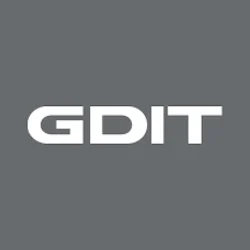The Indian Health Service (IHS), part of the Department of Health and Human Services (HHS), provides federal health services to approximately 2.6 million American Indians and Alaska Natives. GDIT has supported this important health mission for over 20 years, providing the agency’s primary patient information system used to deliver healthcare to tribal communities.
Rex Osborn, GDIT Sr. Principal Solutions Architect Healthcare, discusses this important federal program, the unique mission challenges they face, and how to better deliver accessible care to American Indian and Alaska Native communities.
Indian Health Service has an important mission to provide health services to American Indian and Alaska Native communities. In what ways has GDIT supported the agency and tribal communities?
GDIT has been supporting the IHS mission for two decades and has worked with the agency to provide integral services to raise health access and availability to 2.6 million American Indians and Alaska Natives.
One of the programs we lead is the Software Engineering and Support Services and the Health IT Resource and Patient Management System, or RPMS, a comprehensive patient information system used by IHS. We deliver IT services such as software engineering, application, help desk, and operational maintenance for the system. As the prime contractor for the past five years, we’ve implemented over 500 upgrades and resolved over 4,000 help desk requests.
We have made several important enhancements to RPMS directly supporting better patient healthcare and improving outcomes. GDIT developed and implemented iCare, a comprehensive view of patient information at an individual and population level that is currently used to enhance clinical decision making. And we implemented a personal health record (PHR) that allows patients to access their health information. This also includes a direct messaging feature so providers can send secure messages to patients. The benefits of these efforts lowered cost, improved clinician collaboration and reduced risk across patient continuity of care. Focusing on improving community-based care is essential to improving the lives of Alaskan Indians / American Natives.
For several ongoing and new RPMS software development projects, we have provided support to 15,000 users of RPMS software, delivering on time and on budget. We recently implemented a 2015 Meaningful Use Certification for electronic health records, or EHR, applications, completing the 18-month project in under eight months. This ONC certification ensured certified health IT meets strict capability, functionality, and security requirements adopted by HHS.
During COVID-19 response, we were able to bring innovations to the agency, developing the COVID vaccination and lab reporting systems. We successfully onboarded over 200 sites across AI/AN communities and contributed to the data transformation solution populating the Four Directions Hub (4DH) Patient Index, a web-based tool that creates a single source of information for a patient.
IHS faces unique requirements in implementing a modern electronic health record, or EHR, system. Can you expand on these challenges and how the agency can address them?
Implementing a modern EHR is more than just technology and processes. It needs to be focused on the people and patient outcomes. For IHS, a successful implementation means working with the diverse patient population, tribal partners, and area offices with unique relationships with IHS. Compliance with tribal, state, and federal reporting requires an emphasis on situational awareness and effective governance.
We are architecting a solution that is scalable across 567 tribes, 37 states and over 600 medical facilities, and one that is interoperable to provide functionality and capabilities that meet adaptive environments supporting acute, ambulatory, urgent, emergency, and post-acute care.
Currently, each tribal site has a choice on what health record and health IT system they use, creating many disparate sources of information and systems that don’t work with one another. Our solution ensures a comprehensive data migration and conversion tool that cohesively combines data from financial, clinical and administrative data across these disparate health IT systems. It’s standing up a new, modern environment accessible across IHS, tribal, and urban sites,
Implementation is a process, one that requires precise goals and milestones with effective governance. Onboarding third party EHRs currently in use and installed in tribal sites will also lower barriers to adoption of the new system featuring longitudinal health record – a comprehensive record of a patient’s health experiences. When a patient receives care from different physicians and clinics, having this information integrated and accessible at future health visits allows for better patient care and outcomes.
How do partners contribute to a successful EHR implementation?
We’ve brought together a robust team to address core needs of IHS for their EHR system. This exclusive team joins us with both federal and commercial expertise in healthcare and health IT to fully deliver on these requirements. This team will allow us to address core needs of the EHR for population health, health information exchange, interoperability to work together with other systems, and the associated implementation and training at each tribal and IHS site.
Our key integration and service partners bring expertise in clinical applications, management, and governance across all services within the technical solution.
One of the challenges you mention is the great complexity in delivering a modern EHR system. What positions GDIT to overcome these challenges for an agency of this size and geographically dispersed across the country?
A unique aspect compared to other agencies is that IHS serves 567 federally recognized Tribes across the country that each manage their own governance and community, which includes healthcare. Providing a system that will help each independent site provide better patient care is the goal of the EHR system, and we emphasize three main areas in our solution.
The first is repeatable and predictable EHR implementation. A strong foundation will allow uniformity yet adaptability to the services offered by each medical site.
The second is medical discipline alignment – aligning the medical specialty areas, such as dialysis, dental, optometry, epidemiology, behavioral health, for example, with primary care. This facilitates a continuity of care and address areas like chronic disease management and equal access to care.
And the final component is interoperability, ensuring the new EHR works with other health information exchanges, state, public, health, and federal agencies. This will allow IHS to direct and validate data across Veterans Affairs and the Department of Defense as well. Interoperability will improve situational awareness, care demand and utilization of current resources.
Providing the right tools in challenging environments reminds us that core important mission, supporting the health and wellbeing of the American Indians and Alaska Natives.






